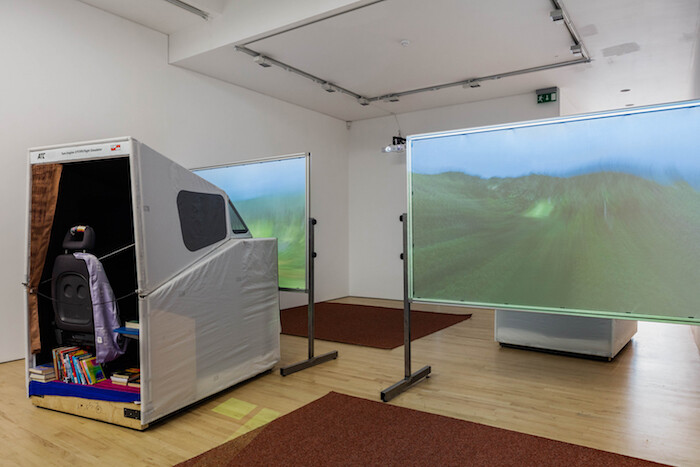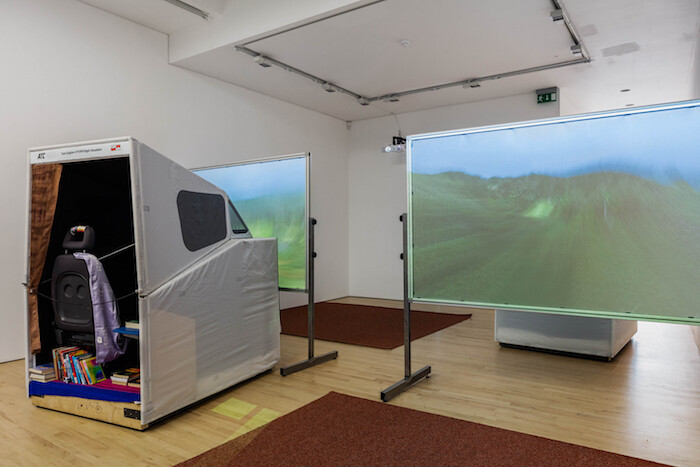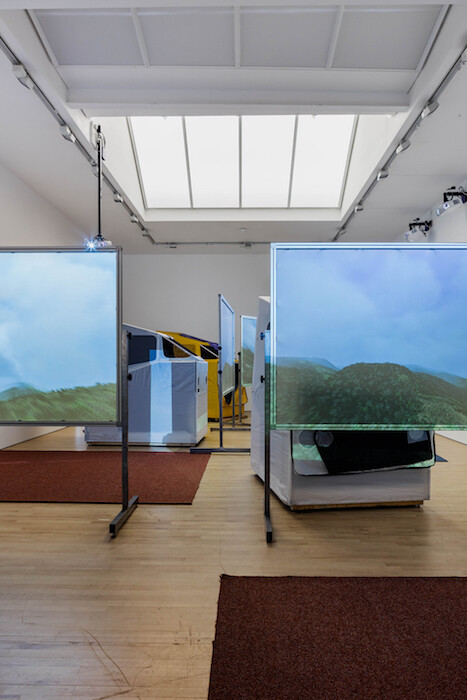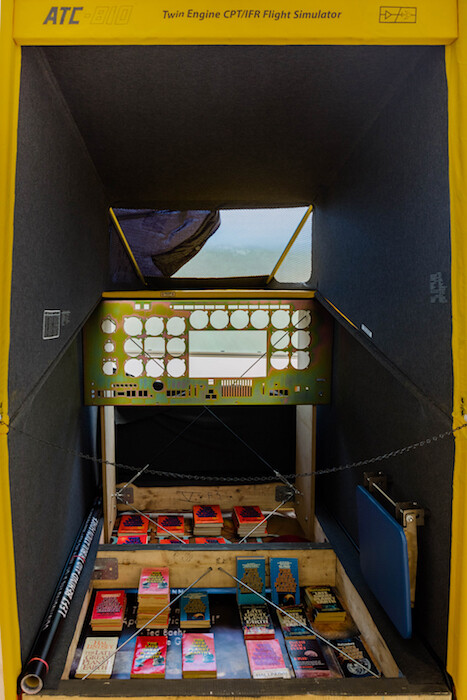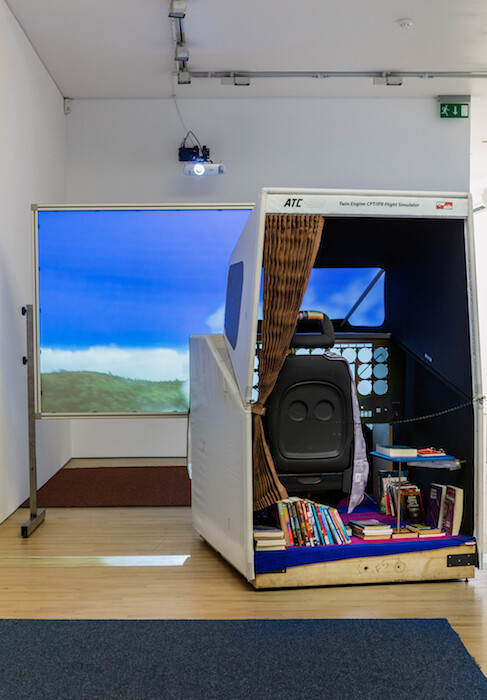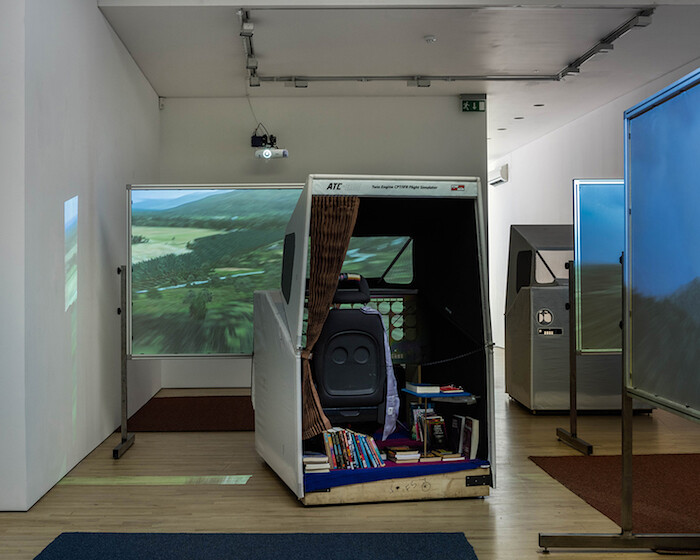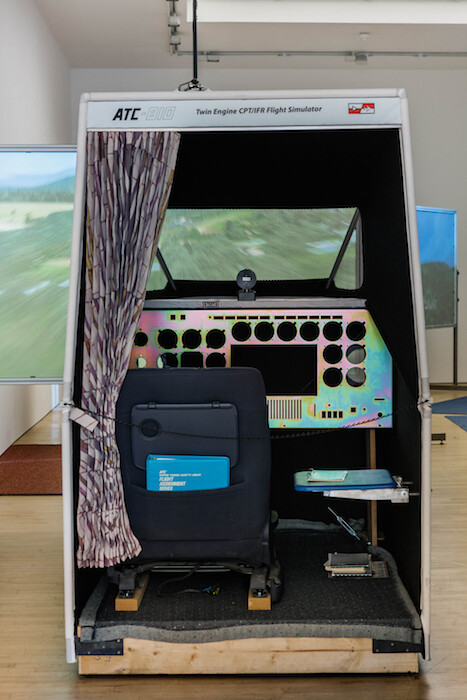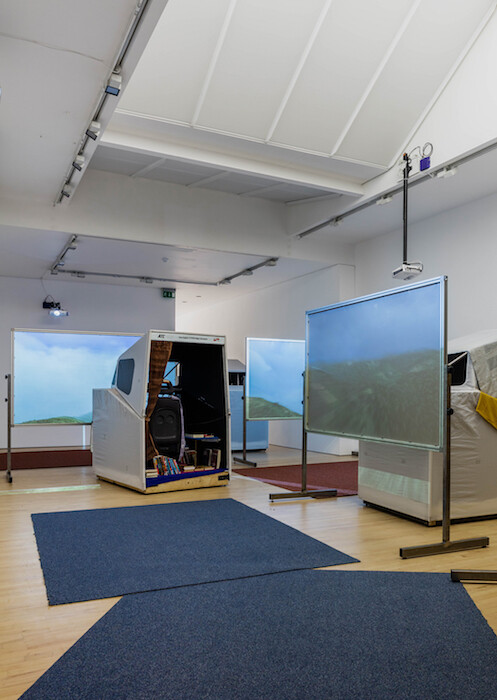There is a subplot in Harmony Korine’s movie Mister Lonely (2007) that would make a fitting companion to Michael Stevenson’s exhibition “Signs & Wonders.” It tells the story of a nun who survives her fall from a missionary aid plane flying over the forests of Panama. The miracle inspires her sisters, who take to jumping from planes to demonstrate their faith and the power of God to protect them. The nuns pray in mid-air, react in ecstasy to the miracle, and prepare diligently for every flight and fall. But how does one compute a miracle? And how does one prepare for it?
Stevenson’s installation at Carl Freedman Gallery comprises four hand-built 1980s flight simulators, all of them facing screens onto which digital renderings of a flight over a forest in Papua New Guinea are projected. Visitors are unable to enter into the unmanned cockpits, and the simulators appear to fly themselves, heading back and forth across a real route between villages hidden in the mountains. Although there are no nuns in sight, each cockpit carries its own collection of evangelical and millenarian books, dating from the 1960s onwards, by authors involved with the School of World Missions at Fuller Seminary in Pasadena, a movement which became known as Signs and Wonders. The books are a reminder of the shock that has always come with the meeting of Christianity and local belief systems, however charitable the missionary schools’ ostensible aims.
Stevenson’s airborne installation reminded me of computer pioneer Charles Babbage’s proposition, in The Ninth Bridgewater Treatise (1837), that “the air itself is one vast library, on whose pages are forever written all that man has ever said or even whispered.” Babbage further speculated that miracles, rather than being a deviation from natural laws, might be “the exact fulfillment of much more extensive laws than those we suppose to exist.”1 In the exhibition’s press release, anthropologists Steven Connor and Maria José de Abreu are cited as sustaining that certain pre-modern cosmologies see the air as “thickly populated and animated by a plethora of entities, substances, odors, humors and specters.” It is not clear whether this refers specifically to the Papuan peoples, but it nonetheless points to an embodied knowledge that distorts natural laws. That is a fitting description of miracles. In the encounter between the nature of the colonizing evangelicals, arriving by plane, and that of the native Papuans, heavily marked by animist cosmologies, the air is best seen as just such a medium. It is both subject and narrative space. Air contains more than the elements thus far identified by science. Air not simply as a mix of elements, but as the possibility of different socialities.
In a discussion between Stevenson and critic Jan Verwoert at the exhibition’s opening, Stevenson explained how a student of his spent three months learning how to pilot the simulated route between forest villages. It was a hard task—with lots of crashes and falls. Like the nuns in Korine’s movie, his was an embodied knowledge. Once mastered, however, the body of the student was removed and one is offered simply the flight, the natural world, and the imminence of contact. The simulation of an airborne object traversing a plethora of possibilities about what the air might be in relation to two distinct cosmologies: evangelism and a Papuan animism.
For evangelical Christians, the rapture is the event which sees believers alive and dead raise above the world of things to meet God in the air; non-believers will be left behind, unaware even of the event having taken place, to face the period of tribulation. However, a believer too may be unaware that the rapture has taken place, and that s/he has not been chosen. How to live such a life? Believe that despite the end of the world, life keeps going? An evangelical may tell you that it’s not so much about the rapture as the daily preparation for it. Rapture, after all, is such a mundane thing. It has happened before, it is always happening: rapture as the colonial encounter, when worlds meet. In Papua New Guinea rapture takes the shape of a plane full of nuns.
Mister Lonely ends with the end of miracles. A long, steady shot of nuns’ bodies washing up dead on the beach. It is a tragic image, but also deserving: the Papuan air having revolted against missionaries, or perhaps evangelicals betrayed by their own God. Empty cockpits flying to a digitally rendered Papua comes close. I wish the computer would crash. A digital rendering of the forest, abandoned on the island shore.
Charles Babbage, The Ninth Bridgewater Treatise: A Fragment (London: John Murray, 1837), 113.
